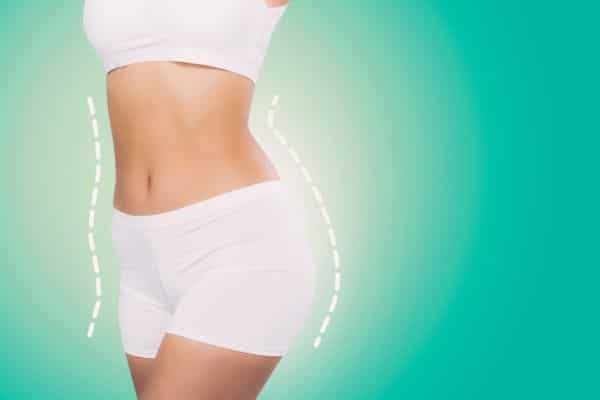A Breakdown of Breast Lift Cost Factors
Breast lift cost can vary greatly from surgeon to surgeon. Moreover, the geographic location, technical approach, and anesthetic requirements of your surgery will all play a role in determining your final cost.
Let’s take a closer look at this cost breakdown and help you better prepare for the financial aspects of breast lift surgery.
How Much Does a Breast Lift Cost?
In order to truly understand how much a breast lift will cost and what the cost breakdown will be, it is crucial to book consultation appointments with reputable board certified plastic surgeons in your area. Unfortunately, many patients fail to understand this and instead, go online to find price quotes, which can vary considerably.
While some websites do provide cost estimates for plastic surgery prices, these are often inaccurate. For example, some sources may offer an estimate that does not include the surgeon’s fee. Others may equate breast lift costs with the cost of another breast surgery like a breast augmentation procedure or breast reconstructive surgery.
Naturally, surgical procedures like these are related. But they are quite different as well. When you have a breast sag and need a breast lift, the surgical techniques, equipment, technology, and approaches required to correct the situation are very unique. A breast implant will do something entirely different.
This means that the cost of a breast lift can be entirely different from the cost of a breast augmentation — even at the same practice, with the same surgeon, and for the same patient.
Breast Lifts: A Cost Breakdown
These are the main factors that will determine how much you are charged for your breast lift.
1. Surgeon’s experience
The overall cost of your procedure will largely depend on the experience, expertise, and certifications of your surgeon. The more skilled and sought-after they are, the more they will likely charge to perform your procedure.
2. Surgical scope
While you can certainly look at the “average” cost of an “average” breast lift, very few patients actually fall into the “average” category.
In other words, chances are, your breast lift will be unique and will, therefore, require a unique surgical approach. Sometimes, this costs more than the “average” amount.
3. Additional surgeries
If your breast lift is part of a mommy makeover or combined with another surgery such as a tummy tuck, this increases the price as well.
Some patients, for example, will undergo a breast lift after weight loss and will want other procedures for body contouring as well. All of the additional costs and related expenses for these procedures increases the average price of surgery.
4. Operating room costs
Many providers have privileges with a local hospital where they perform surgery. Whether you go to a hospital or an area surgical facility, all of the costs associated with running that facility will be factored into your final bill.
5. Anesthesia fees
Lastly, anesthesia can be quite costly for major surgeries like mastopexy. This surgery typically requires general anesthesia, which tends to cost more than local anesthesia.
FAQ: Breast Lift Surgery
What’s the difference between a breast lift and breast reduction?

Both remove excess skin and can follow the same incision pattern (lollipop lift pattern, anchor lift pattern, etc.). Furthermore, a breast reduction almost always includes a lift, and breast lift results can sometimes make the breasts appear smaller.
Basically, the distinguishing factor is that the main goal of a breast lift is to lift sagging breasts and create a more youthful, perkier silhouette. Conversely, the main goal of a breast reduction is the reduce the overall size of the breasts.
How much does a breast reduction and lift cost?
A breast lift is often combined with a breast reduction to reduce overall breast size while also creating an attractive desired shape. Your final breast lift and reduction cost will depend on surgeon fees, general vs local anesthesia fees, surgical facility fees, whether health insurance will help cover your procedure, and more.
How can I pay for the final price of breast lift surgery?
If you do not wish to pay out-of-pocket, most practices accept credit cards, or you may choose to set up a repayment plan with a medical credit company such as CareCredit.
Does a breast lift and augmentation cost more than a simple breast lift?
Yes, if you opt to undergo a breast augmentation mastopexy (breast lift combined with breast augmentation), this surgery will indeed cost more than a simple breast lift.
That’s because breast augmentations are entirely separate procedures from breast lifts. They require additional techniques and unique skills, in addition to the cost of breast implants.
Will I have scars after my breast lift?
Once your breast lift recovery time has passed, you will notice that you do have scars from surgery. The exact location of them will depend on what breast lift incision pattern your surgeon used. Fortunately, most breast lift scars can be hidden beneath most clothing and undergarments.
Furthermore, they will fade and flatten out with time. Talk to your surgeon about the use of silicone topical gels, massage, and other treatments, which can help reduce breast lift scar appearance.
Request Your Consultation Today

If a breast lift procedure is something you would like to learn more about, please do not hesitate to contact our office and set up a consultation appointment with Dr. Sieber. Our team would be happy to break down the total cost of surgery for you in addition to answering any questions you may have about breast lift mastopexy techniques, breast lift risks, or cosmetic surgery in general.
We look forward to hearing from you!



 The location of your scars depends on the breast lift technique used and where each
The location of your scars depends on the breast lift technique used and where each  Breast lifts can make sagging breasts look perkier and more youthful. If you are interested in breast lift surgery, please contact our office today to set up a consultation appointment with board certified plastic surgeon Dr. David Sieber.
Breast lifts can make sagging breasts look perkier and more youthful. If you are interested in breast lift surgery, please contact our office today to set up a consultation appointment with board certified plastic surgeon Dr. David Sieber. If you have achieved massive weight loss either through the use of medications, bariatric surgery, or diet and exercise, you may be considering body contouring to deal with the large amounts of excess skin you’re now facing. Double board certified plastic surgeon Dr. David Sieber performs a variety of body contouring procedures for patients at his San Francisco practice.
If you have achieved massive weight loss either through the use of medications, bariatric surgery, or diet and exercise, you may be considering body contouring to deal with the large amounts of excess skin you’re now facing. Double board certified plastic surgeon Dr. David Sieber performs a variety of body contouring procedures for patients at his San Francisco practice. Scheduling an in-office consultation appointment for body contouring surgery is as easy as giving our practice a call. Double board certified plastic surgeon Dr. David Sieber is highly-trained and experienced in performing body lifts, tummy tucks, and other body contouring procedures for weight loss patients.
Scheduling an in-office consultation appointment for body contouring surgery is as easy as giving our practice a call. Double board certified plastic surgeon Dr. David Sieber is highly-trained and experienced in performing body lifts, tummy tucks, and other body contouring procedures for weight loss patients. Are you ready to have your first plastic surgery consultation? Or are you simply interested in getting more information?
Are you ready to have your first plastic surgery consultation? Or are you simply interested in getting more information? 